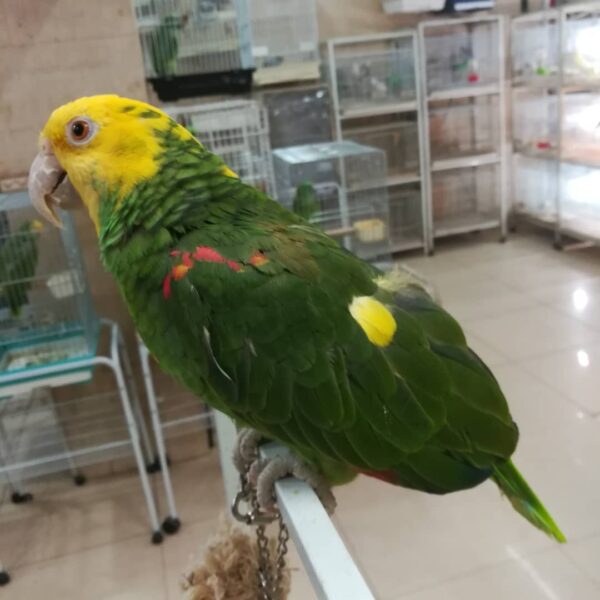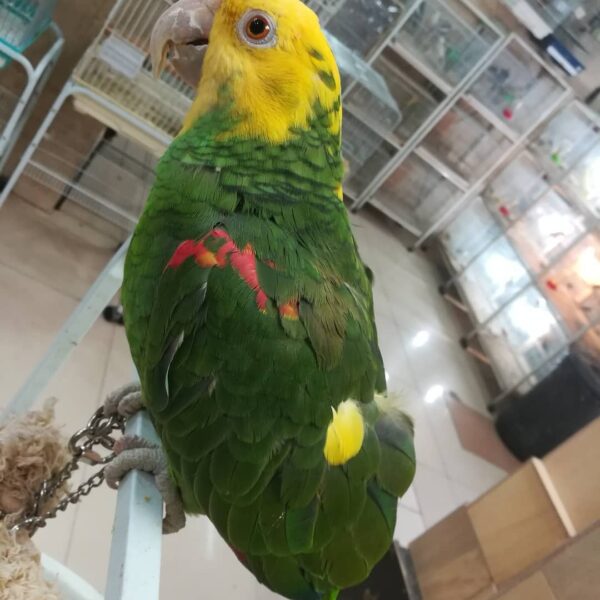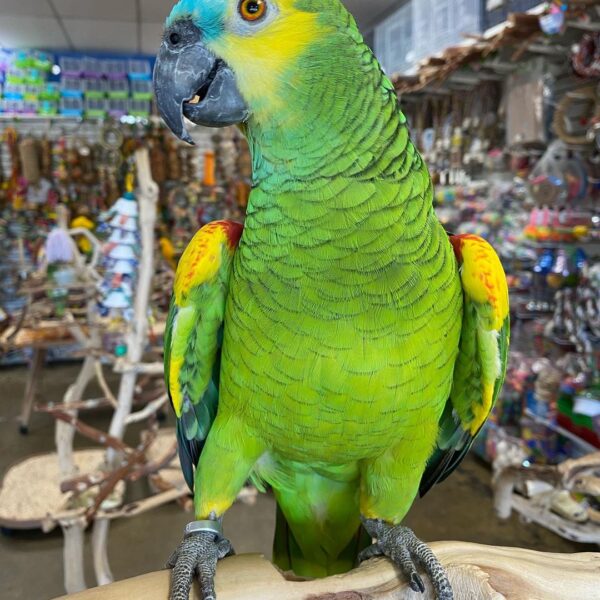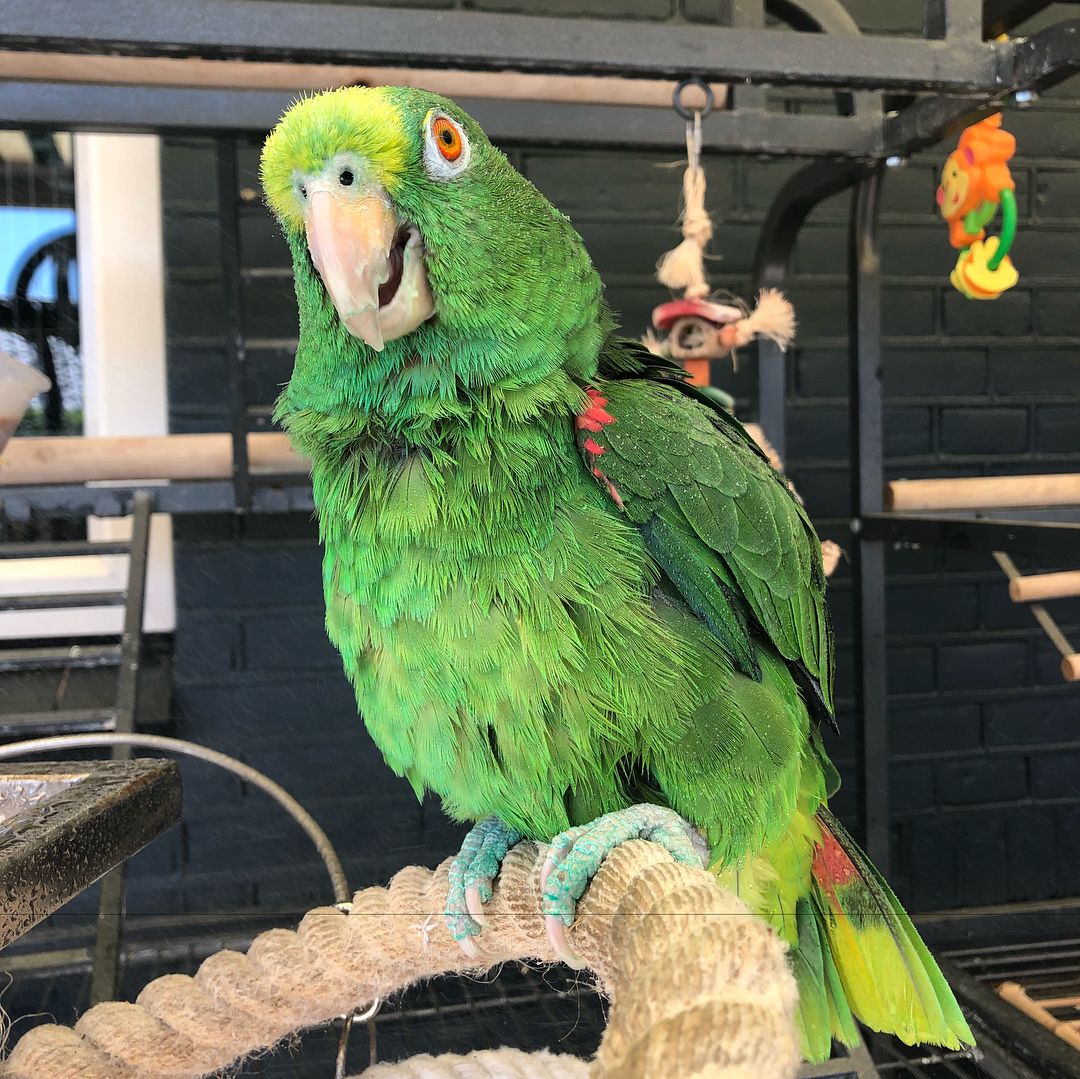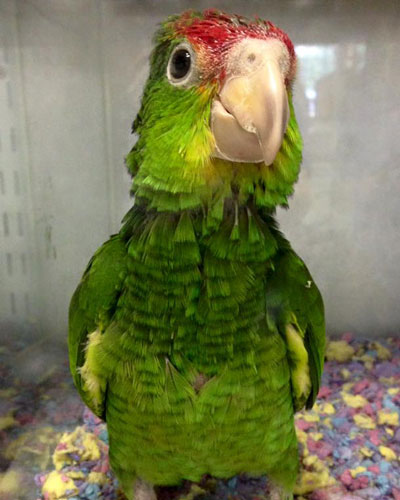Description
Double yellow headed amazon for sale, is an extremely intelligent, attractive, and entertaining parrot. While young these mostly green birds have only a yellow forehead and maybe a dappling of yellow across the rest of the head. The completely yellow head of mature birds takes place through molting over a period of about 4 years. The adult is a lively, spectacular-colored pet bird.
The yellow-headed Amazon has been popular as a pet for several 100 years. These birds are very inquisitive. The Double Yellow Headed Amazon will usually attach itself to one member of the family as a mate but will tolerate the other members of the family as part of the flock.
They are extremely sociable and energetic, like other Amazons, but to an unusual degree. The vocabulary of a Double Yellow-headed Amazon can vary greatly depending on the individual bird. These parrots also crave their owners’ attention and may engage in a variety of entertaining behaviors to get it. They may fan out their tails, make sudden, erratic head movements, turn their heads upside down, or rapidly dilate and contract their pupils.
Care and feeding of Double yellow headed amazons
A pet bird will enjoy a varied diet, including a quality seed mix or a pelleted diet, and many fresh fruits and vegetables. Pellets will work if started at an early age.
Plenty of human food that is nutritious can be offered, and they like chicken. They like to eat at the table and enjoy eating with their family. Avocado and chocolate are toxic to any parrot. They will let you know when it’s dinner time.
Feeding this bird is simple; if it is introduced to a wide range of foods early on, it will eat everything in its cup and has a huge appetite. That said, treats and table foods should be fed in moderation, as a double yellow-head has a hard time saying “No,” to food. A double yellow-headed Amazon should be fed a nutritionally balanced pelleted diet, as well as fresh vegetables and fruit. Additionally balanced nutritionally, Lafeber’s Avi-Cakes and Nutri-Berries provide variation for the diet as well as foraging opportunities. Given that this bird is prone to insufficiency, foods high in vitamin A are essential. Calcium is also crucial. The DYH has a healthy appetite, but if it doesn’t exercise enough, it could become obese.
Every day, give your pet between 1/3 and 1/2 cups of pelleted food and 1/3 to 1/2 cups of fresh produce. Your bird will keep top nutrition if you feed it a fresh and diverse diet.
Make sure to provide these bird toys made of materials like wood, leather, and acrylic that it can joyously tear apart. A bird finds satisfaction in an entirely destroyed toy; it represents success to them. This bird might turn its attention to furniture and other possessions if there aren’t enough toys to destroy.
Challenging toys are a must for this bird: a bored double yellow-headed Amazon will quickly become a destructive one.
Social Behaviors of Double yellow headed amazon for sale
The yellow-headed Amazon enjoys human interaction as well as interaction with other birds. Many times there are several hundred seen in a group. When they reach sexual maturity, they also establish unbreakable pairs. They can also be found alone in the wild, which may account for their stronger independence.
If you are looking for a quiet, shy, timid bird, this amazon is not for you. It is a highly social bird that loves to be the center of attention. They will learn tricks and learn to play tricks on you. They look forward to interaction and games and will provide you with many fun moments and a lot of laughter.
Handling/Training of Double yellow headed amazons
The double yellow-headed Amazon quickly becomes accustomed to a new environment and its keeper and is then ready to start bird training. Generally, though, you should give a new arrival a few days to get used to you, your voice, and its cage before trying to handle it. A hand-fed baby will not need much taming and can often be handled right away, as it is used for human attention.
Speech and Vocalizations
This species is the best mimic of all the Amazon parrots and is second only to the African gray parrot in its ability to learn words and phrases.
Additionally, it is a noisy bird that frequently screams twice daily, at dawn and twilight. For this species, these loud vocalizations are normal. When a bird cries nonstop throughout the day out of boredom or lack of mental stimulation, screaming can become problematic.
However, this parrot can be quite noisy. They are not appropriate for people looking for birds that are quieter. You might not want to adopt one if you live in an apartment.
Though it varies from bird to bird, they are noisiest during twilight and dawn. For this species, loud vocalizations are the norm. In some circumstances, screaming can be a serious issue. Some birds might perform it continuously.
Boredom usually leads to noisier behaviors. If you keep your bird entertained, they may not be quite as loud.

